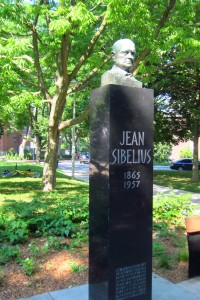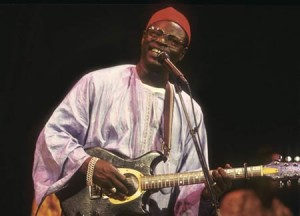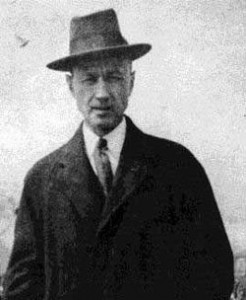 This Icelandic band constructs soundscapes with old-fashioned electronic effects reminiscent of the 1970’s. The cheesy beeps and whirs gradually build into intelligent structures, with elements of hard rock and house. I especially liked track seven, “Seremonia”, which builds to a satisfying resolution. Jóhann Jóhannsson, Iceland’s wonderfully sinister-looking composer and multimedia impresario, is behind it all. If you like listening to old Kraftwerk albums, and the instrumental piece “Telstar” drifts out of your subconscious when you come out of a coma, you’ll enjoy this.
This Icelandic band constructs soundscapes with old-fashioned electronic effects reminiscent of the 1970’s. The cheesy beeps and whirs gradually build into intelligent structures, with elements of hard rock and house. I especially liked track seven, “Seremonia”, which builds to a satisfying resolution. Jóhann Jóhannsson, Iceland’s wonderfully sinister-looking composer and multimedia impresario, is behind it all. If you like listening to old Kraftwerk albums, and the instrumental piece “Telstar” drifts out of your subconscious when you come out of a coma, you’ll enjoy this.
Category Archives: CM - Listening 2009 - Page 4
Apparat Organ Quartet
First-time listening for February, 2009
19513. (Anton Bruckner) Symphony # “0”
19514. (Jean Sibelius) “Souda, Souda, Sinisorsa [Swim, Duck, Swim]”, JS 180 [s. Anne Sofie
. . . . . von Otter]
19515. (Jean Sibelius) “Norden [The North]”, Op.90 no.1 [s. Anne Sofie von Otter]
19516. (Jean Sibelius) “Narciss [Narcissus]”, JS 140 [s. Anne Sofie von Otter] Read more »
A Pleasure Awaits Me
Hurray! As my readers will know from constant references, I’m an ardent Sibelian… given to making pilgrimages to his statue in Toronto’s Sibelius Park, for example. The Toronto Symphony Orchestra will be performing all seven Sibelius symphonies, in sequence, in their coming season, under guest conductor Thomas Dausgaard. Dausgaard is a Danish conductor with a good reputation, but I’ve heard none of his recordings. The tests will be how he handles the finale of the Fifth Symphony… the last bars must be timed perfectly to get the effect I think Sibelius was after, and many of the recordings I have screw it up completely. But most of all, it’s the subtleties of the grim and ambiguous Fourth Symphony that matter to me. Only one modern conductor, Colin Davis, satisfies me for this symphony. If Dausgaard comes even close I’ll be in ecstasy.
Prokofiev’s “Classical” Symphony
Symphony No. 1 in D major, Op 25 was designated “Classical Symphony” by Prokofiev when it premiered in 1918, in Petrograd. “Neo-classical” would be more appropriate. Prokofiev said it was a symphony “that Haydn would compose if he lived today”. There are no quotations from Haydn in the work, however, and the melodies are unmistakably Prokofiev, with his usual sardonic humour. The work must be hard for a conductor to interpret, because the three recordings I have all feel rather different. I have two vinyls: one by Jean Martinon, which is performed at breakneck speed, and an old Soviet recording by Gennady Rozhdestvensky which is done a little more respectfully. On CD, I have Neeme Järvi’s set of the complete symphonies, with the Royal Scottish National Orchestra. I find this one the most satisfying. Read more »
Eclectic El Guincho
 It would be hard to name a musical influence that isn’t to be found in the first two albums by Catalunyan musician Pablo Díaz-Reixa, aka El Guincho. His myspace page describes his music as “pop/tropical/club”, but that hardly begins to list the eclectic sources that he puts together on his Roland SP-404 sampling workstation. There’s a resemblance to Animal Collective’s work, but it wouldn’t be mistaken for it. Nothing comes across as ponderously serious — every piece is clearly designed to be fun to listen to. It’s more “party music” than “arty music”, even though it is technically elaborate. The first album, Folías (2007) has some nice bits, but Alegranza! (2008) has the outstanding work. I particularly like the catchy, almost high-life “Fata Morgana”, “Kalise”, with its manic steel-band continuo, and most of all, the grand, many-layered “Buenos Matrimonios Ahí Fuera”.
It would be hard to name a musical influence that isn’t to be found in the first two albums by Catalunyan musician Pablo Díaz-Reixa, aka El Guincho. His myspace page describes his music as “pop/tropical/club”, but that hardly begins to list the eclectic sources that he puts together on his Roland SP-404 sampling workstation. There’s a resemblance to Animal Collective’s work, but it wouldn’t be mistaken for it. Nothing comes across as ponderously serious — every piece is clearly designed to be fun to listen to. It’s more “party music” than “arty music”, even though it is technically elaborate. The first album, Folías (2007) has some nice bits, but Alegranza! (2008) has the outstanding work. I particularly like the catchy, almost high-life “Fata Morgana”, “Kalise”, with its manic steel-band continuo, and most of all, the grand, many-layered “Buenos Matrimonios Ahí Fuera”.
Ali Farka Touré: The Source
I’m playing, for the umpteenth time, my favourite among Touré’s albums. I’ve written elsewhere about this astonishing musician [Thinking of Timbuktu; Ali Farka Touré, Toumani Diabaté In Perfect Sync; Ali Farka Touré and Ry Cooder Talking Timbuktu]. This album is a tribute to his beloved Niger River roots, with song lyrics jumping casually between Bambara, Temazhek and French. Tracks like “Cinquante Six” and “Yenna” demonstrate his absolute mastery of the guitar, with the perfect timing that made him a legend. My favourite track is the song “Dofana”, in which he wistfully evokes a small village, “a paradise on Earth, only twenty kilometres from here”, threatened only by the “idiocy of politicians”. Touré, on becoming a successful recording artist, eschewed the migration to Paris or London, and instead became the mayor of just such a village. Most of the money he made went into supplying it with clean water and electricity.
First-time listening for January, 2009
19430. (Charles Ives) Symphony #5 “Universe Symphony” [reconstructed by Larry Austin]
19431. (Scratch Perverts) FabricLive 22
19432. (Oasis) Definitely Maybe [Japanese release with two extra songs; original at 2447]
19433. (Charlie Haden & the Liberation Music Orchestra) Dream Keeper
19434. (Deerhunter) Cryptograms
19435. (Jean Sibelius) “Svarta Rosor [Black Roses]”, Op.36 #1 [s. Anne Sofie von Otter]
Read more »
Grammatics — A good new indie band from Leeds
This album was recorded during June-November 2008, but it hasn’t been released yet. Grammatics is a British indie rock band from Leeds with a complex sound. Owen Brinley (guitar/vocals), Emilia Ergin (cello), Dominic Ord (drums) and Rory O’Hara (bass) have an orchestral approach to their rock, quite far off from the minimalist style dominant in the British Indie scene. Emilia Ergin uses the cello much like a lead guitar. The rhythm section is very strong: this is Rock, not mushy orchestrated pop. There’s a wee bit of Queens Of The Stone Age and other American indie bands perceptible in this mix, but on the whole, Grammatics is an original band, trying to do things on its own terms. Every song is different, every song is interesting. I’ll be listening to anything I can get from this group.
Charles Ives: the “Universe Symphony”
We’re an odd bunch, those of us who have the taste for the eccentric music of Charles Ives, the amateur composer and insurance salesman who independently developed (ahead of everyone else) virtually every musical innovation of the 20th century. Unrecognized and unperformed during most of his lifetime, he composed bizarre concoctions of polyrythms, polytonality, quarter tones, and tone clusters, including aleatoric elements, long before anyone else dreamed of doing so. Read more »




